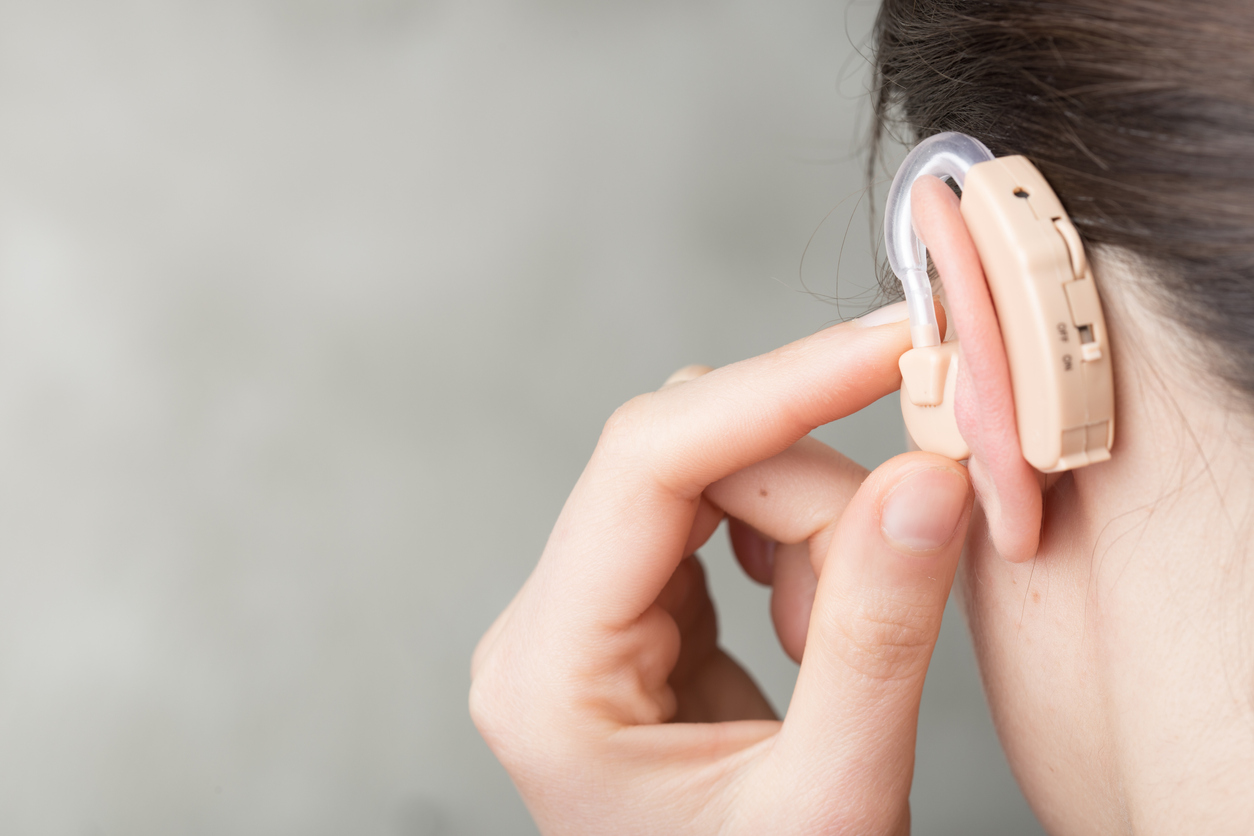Are your hearing aids not working properly? You might be able to fix the problem yourself. The troubleshooting technique you need will vary depending on the issue you’re having. The most common hearing aid issues include:

- Distorted sound
- Muffled sound
- No sound
- Hearing aid keeps turning off
- Feedback
- Hearing aid keeps falling out
We’ve compiled this guide on some quick at-home hearing aid troubleshooting techniques. If you try them and continue to experience difficulty, please reach out to your audiologist.
Check the Battery
First things first, make sure you have a fresh battery, especially if you’re experiencing any sound or power issues. If you have rechargeable hearing aids, check their charge level and plug them in if necessary. If you have replaceable batteries, replace them with new ones. The battery should rest in place without needing to be forced into the compartment. Take an opportunity to investigate the battery compartment: look for dirt, debris or corrosion that could interfere with the battery.
Clean Off Earwax
Earwax buildup on the speaker is a very common reason for distorted or muffled sound. Remove earwax with a wax pick or wax loop and inspect the speaker for any other particles that might be clogging it. Change the wax guard if you have one.
To prevent this from being a recurring issue, implement a regular cleaning routine for your hearing aids. It’s recommended that you clean them daily or at least several times a week.
Adjust the Settings
Review your settings and current listening program, even the ones that seem obvious. Is the volume turned up? Or, if your issue is feedback, is the volume up too high? Are some pitches being over- or underemphasized? Is background noise suppression on? Did you accidentally get switched to a T-coil listening program? All these settings could affect the sound, making it sound distorted or muffled.
Remove and Reinsert the Hearing Aid
Many hearing aid issues are caused by the hearing aid being inserted improperly. If it doesn’t seal the ear canal, you might experience feedback. An improperly inserted hearing aid also has a higher chance of falling out of your ear. When you put them back in, pay attention and look for a nice, snug fit.
Dry the Hearing Aid
Moisture can cause significant damage to various digital parts of the hearing aid, as well as make the inside of your ear slippery, potentially causing the hearing aid to fall out. Place your hearing aids in a hearing aid dehumidifier or dryer to remove any moisture that may have built up. If you suspect you have deeper water damage than can be remedied with a dryer, call us for a repair and service appointment.
When to Visit the Clinic
If you’ve tried all of the above remedies and are still experiencing issues with your hearing aids, it’s time to bring in a professional. Call Bangor Audiology and we’ll take a look at it.